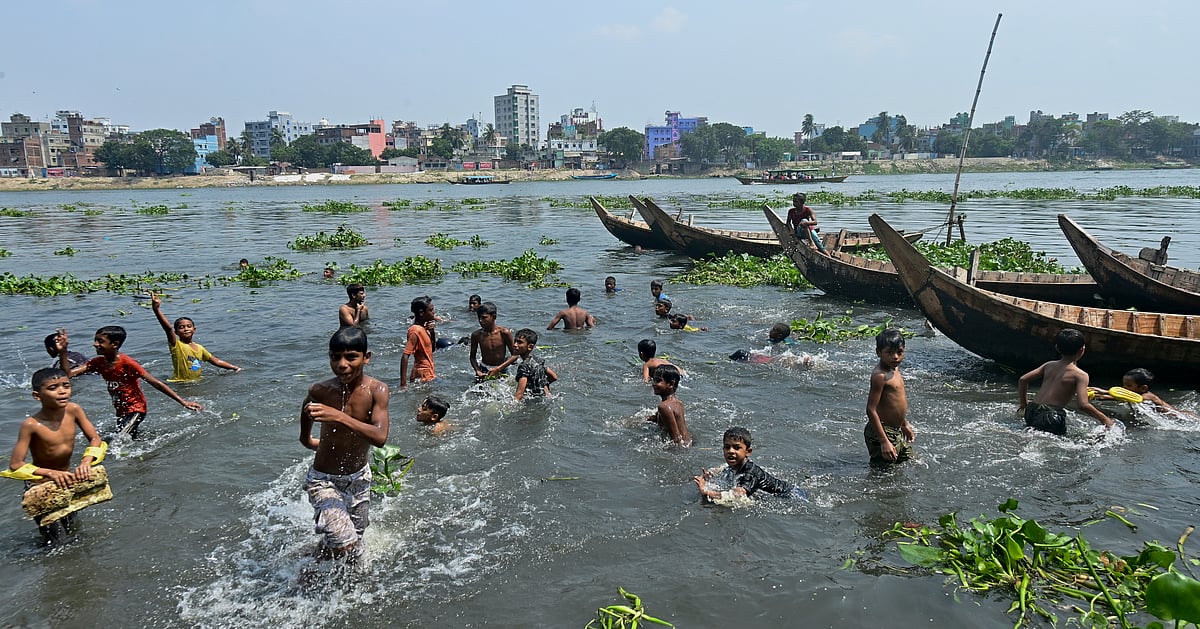When Bangladesh became the first country in South Asia to join the UN’s Water Convention earlier this year, it was presented as a win-win.
Signing up to the Convention on the Protection and Use of Transboundary Watercourses and International Lakes would help Bangladesh safeguard and manage waterways that represent a “lifeline to peace and prosperity,” according to the United Nations. At the same time, it was hoped that the South Asian nation’s addition might encourage better cross-border cooperation in a region where shared rivers are often fought over.
As a scholar who works on issues of water security and grew up in South Asia, I understand the drivers behind Bangladesh’s decision to join the convention – recent hydro-political events have raised water security risks for the country of around 174 million.
But contrary to the intention of the convention, I believe Bangladesh joining could actually heighten tensions in South Asia, especially with India.
The need for water security
Bangladesh’s hydro challenges are multifaceted. Half of Bangladeshis live in areas that suffer severe drought. Around 60% of the population is vulnerable to high flood risks. And on average, floods inundate 20% to 25% of the country’s land each year. Moreover, more than 65 million residents still lack access to safe and properly managed sanitation facilities. These overlapping vulnerabilities show why water governance is such a key issue for security, diplomacy and development.
Additionally, the country’s rising population along with the effects of climate change add to this domestic water stress. At least 81 of the 1,415 rivers that flow through Bangladesh have either perished or are on the brink of extinction, according to a recent report. At the same time, Bangladesh relies almost exclusively on rivers that cross borders. With India and China, it shares one of the world’s most complicated transboundary water systems: the Ganges-Brahmaputra-Meghna Basin.
Joining the UN Water Convention
A number of recent developments underscore the reasons Bangladesh sought greater legal and international protection.
In July 2025, China announced what is expected to be the world’s largest hydropower dam, the Motuo Hydropower Station in the Tibet Autonomous Region in southwestern China.
The Chinese government is promoting the dam as a clean energy project that will help the area’s economy grow, even though it will cost 1.2 trillion yuan (about USD 167 billion) to build.
But countries close by are worried about how the dam will affect the region’s environment and politics.
Both Bangladesh and India have complained that the project could make the region less stable. The Yarlung Tsangpo River on which the dam is built runs into India’s Arunachal Pradesh state, which has long been a flashpoint in China-India relations. China claims the region as its own and calls it Zangnan.
Because of where it is situated, the dam could allow China to control or limit the flow of water into India. Similarly, Bangladesh, a downstream country, is concerned that Chinese upstream intervention could hurt its agriculture and make it harder to get water.
Already, the government of Bangladesh has limited control over the country’s water supply because only about 7% of the watershed area of the Brahmaputra, Meghna and Ganges – the three main rivers that flow into the country – are within Bangladesh. Moreover, the amount of water that ultimately reaches Bangladesh is significantly reduced because dam activities by China and India have limited the flow.
Climate change has made the situation worse by changing the way water flows across the Himalayas and the Ganges-Brahmaputra-Meghna basin. For instance, the Bangladesh delta, one of the most fertile and densely populated areas in the world, is already experiencing problems, including salinity intrusion, rising sea levels and the loss of arable land.
In 2019, the Bangladesh High Court ruled that the country’s rivers had the same status as a “legal person” in a bid to award them further protection. This was then followed by a decision by Bangladesh to join the UN Water Convention.
Created in 1996, the convention seeks to promote cooperation and sustainable management of shared water resources. At first, it was intended only for European and Central Asian countries. But in 2016, it became available to all UN member countries.
Bangladesh had initially delayed signing due to a mix of diplomatic, regional and institutional reasons and out of a concern over how it would affect relations with its powerful neighbor, India.
Implications for India
India has traditionally preferred bilateral agreements to resolve cross-border water issues, such as the Indus Waters Treaty with Pakistan and the 1996 Ganges water-sharing treaty with Bangladesh. However, India’s bilateral strategy is fraying. The Indus Waters Treaty has been temporarily suspended following fighting between Pakistan and India.

